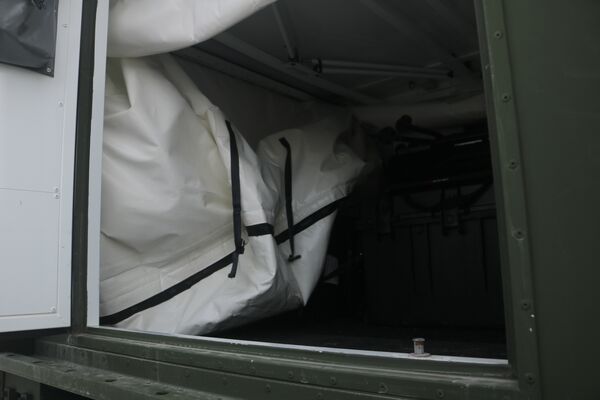
The US Army tested Weatherhaven's pop-up tent for mobile command-and-control operations during the JPMRC 24-02 training rotation. (Janes/Meredith Roaten)
The US Army is observing lessons regarding inexpensive unmanned aircraft systems (UASs) and electronic warfare (EW) emerging from Ukraine, and making sure its own capabilities can hold up, officials told Janes during the Joint Pacific Multinational Readiness Center (JPMRC) 24-02 training rotation held from 12 to 22 February.
The army needs to become stealthier and more mobile to prevent easy targeting by enemy forces, Major General Brian Eifler said in an interview during the training rotation. This may include changes such as eliminating permanent tent structures, said Lieutenant Colonel James Jones, assistant G3 – assistant officer in charge of operations for 11th Airborne Division.
The division overall is trying to become nimbler with its command-and-control (C2) structure, he said. “Deployable headquarters” is the goal post, Lt Col Jones said. Other divisions have a main command post, a tactical command post, and a second tactical action centre or rear command post.
The JPMRC rotation was the first time since the division reactivated that it has tested its version of mission command that is close to the front lines by only using command nodes on wheels, he said. This starts with reshaping the personnel and equipment needed for the new structure. The 11th Airborne Division's authorisation documents support 90 personnel for command, but the division used about 30 during JPMRC 24-02.
“What we are meant to wrap our minds around was what would we want in a Ukraine situation or [fighting against] a near peer?” he said.
Looking to read the full article?
Gain unlimited access to Janes news and more...







